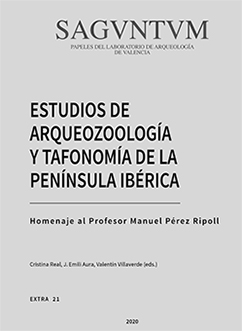El consumo de conejo (Oryctolagus cuniculus sp.) en el estrato IVB del Alto de las Picarazas
 Abstract
Abstract
The European rabbit (Oryctolagus cuniculus) is the most frequent species in the Pleistocene archaeological sites of Mediterranean area. For the few past decades explaining his presence in these contexts has been a challenge for zooarchaeological studies. Field of research where highlight the studies of Prof. Manuel Pérez Ripoll characterizing consistent taphonomic indicators that allow distinguish the agent responsible for the lagomorph bone accumulation in the Upper Palaeolithic subsistence strategies. Through their work discerns that rabbit hunting played a crucial role in the economy of late Palaeolithic hunter-gatherers from Mediterranean area. That contrast with the economic strategy documented to middle Palaeolithic, with a lagomorph’s hunting and consumption less significant.
This article presents a rabbit (Oryctolagus sp.) bones recovered from Alto de las Picarazas site of Lower Pleistocene chronology. Rabbit bones shows cut marks and human bites as consequence of processing and consumption. The article values the importance of lagomorphs capture and consumption by the first hominids.
 Downloads
Downloads
Downloads
Published
How to Cite
-
Abstract325
-
PDF (Español)204
Issue
Section
License

This work is licensed under a licencia de Creative Commons Reconocimiento-NoComercial-SinObraDerivada 4.0 Internacional.



